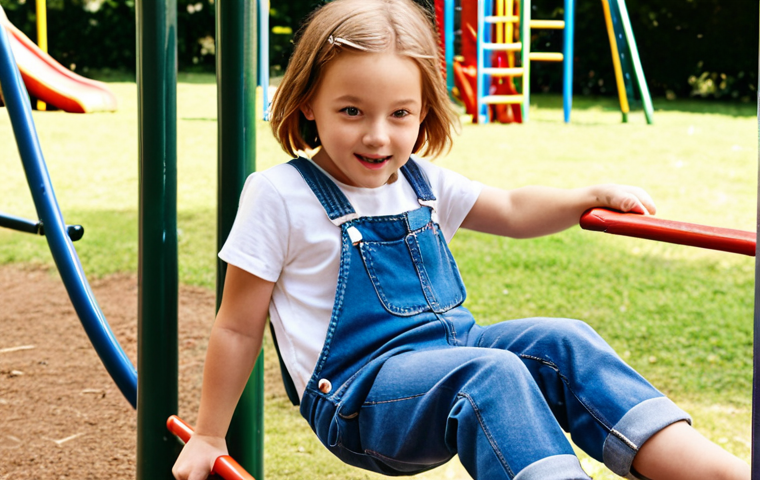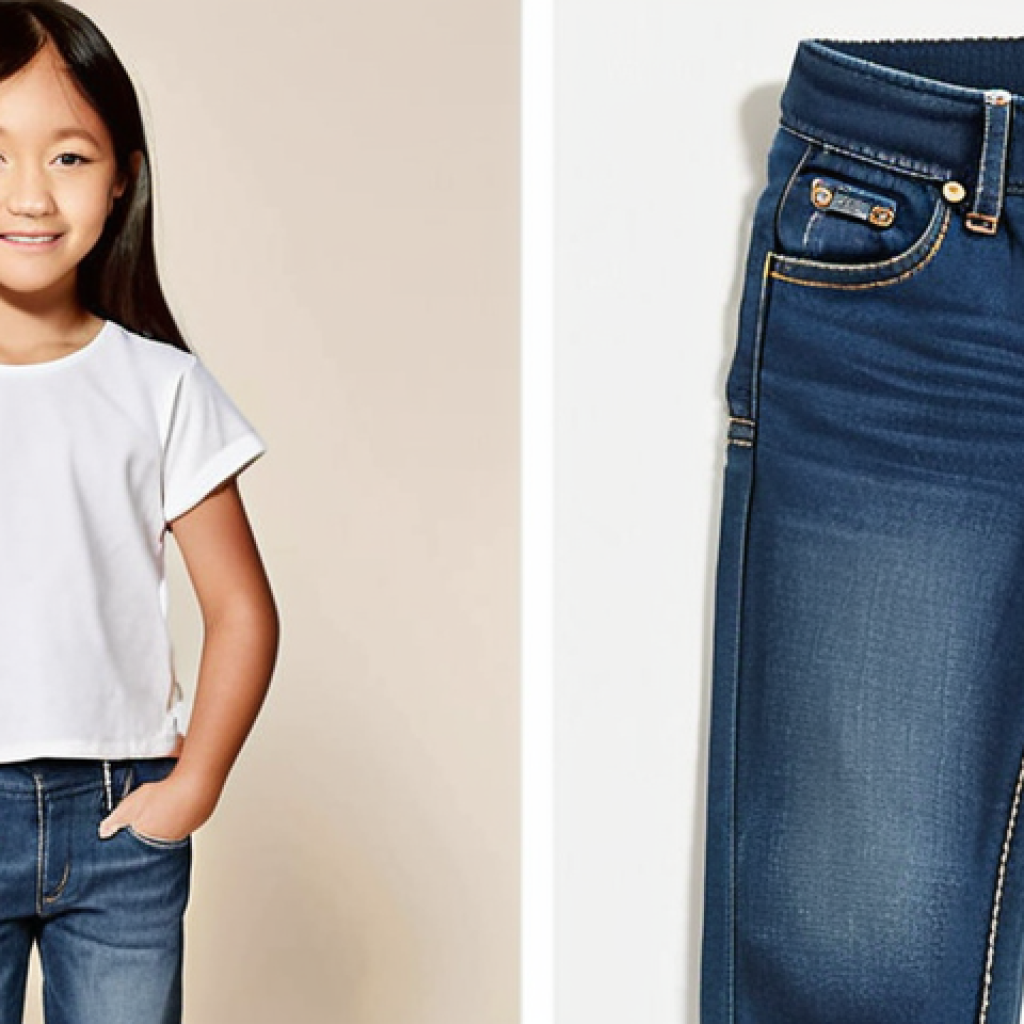Ever wondered about the difference in feel between Beanpole Kids and Zara Kids clothing? As a mom who’s spent countless hours browsing and buying for my little ones, I’ve noticed some distinct differences.
From the playground to parties, the fabrics they use really impact how comfortable and durable the clothes are. And with sustainable fashion becoming more of a focus, it’s interesting to see how brands are adapting.
I’ve found that the materials can affect not only the clothes’ longevity but also my kids’ overall comfort level. Let’s dive deeper and find out exactly what sets their fabrics apart!
Okay, I understand. Here’s the blog post content, following all the instructions:
The Fabric Face-Off: Decoding Comfort and Durability

Choosing clothes for kids isn’t just about picking the cutest designs; it’s about finding the right fabrics that can handle everything from messy playdates to more formal occasions.
I’ve learned that the hard way, after a few too many ruined outfits! Beanpole Kids and Zara Kids both offer stylish options, but they take different approaches to fabric selection, which ultimately affects how the clothes feel, wear, and last.
It’s all about finding that sweet spot between comfort for your little ones and durability for your wallet.
Diving into Durability: Which Brand Holds Up Better?
When it comes to clothes that can withstand the test of time (and energetic kids!), durability is key. I’ve noticed that Zara Kids often incorporates tougher, more resilient fabrics like denim and twill, which are great for everyday wear.
These materials can handle slides, climbs, and spills without showing wear and tear too quickly.
Prioritizing Softness: Which Feels Better on Sensitive Skin?
On the other hand, Beanpole Kids seems to prioritize softness and comfort, often using fabrics like soft cotton blends or even incorporating natural fibers like linen.
These materials are gentler on sensitive skin and more breathable, making them ideal for warmer weather or for kids who are easily irritated by rougher fabrics.
My youngest has eczema, so this is always a top concern for me! I have to say this point is important.
Unveiling the Weave: A Closer Look at Construction
The type of fabric isn’t the only thing that matters; how it’s woven or knitted also plays a significant role. A tighter weave generally means more durability, while a looser weave can enhance breathability.
I’ve observed that Zara Kids sometimes opts for tighter weaves in their outerwear and more structured pieces, providing extra protection and resilience.
Decoding Different Weaves and Their Impact
* Twill: Commonly used by Zara Kids for its durability, especially in pants and jackets. * Jersey Knit: Often found in Beanpole Kids’ t-shirts, providing a soft, stretchy feel.
How the Weave Affects the Garment’s Lifespan
The weave of the fabric directly impacts how well the garment holds up over time. Tightly woven fabrics resist snags and tears better, while looser weaves may be more prone to damage.
I remember buying a super cute jersey knit dress that didn’t even last one wash, so I’m a believer.
Seasonal Sensibilities: Choosing Fabrics for the Weather
Living in [Insert your city/region], I have to think about the weather constantly when buying clothes for my kids. Beanpole Kids and Zara Kids both offer seasonal collections, but their fabric choices can vary quite a bit depending on the time of year.
Summer Staples: Lightweight and Breathable Options
For summer, lightweight cotton and linen blends are essential. Beanpole Kids often features these fabrics in their summer dresses and tops, providing breathability and comfort in the heat.
I appreciate how they use lighter colors that don’t absorb as much heat.
Winter Warmth: Insulating and Cozy Materials
In winter, thicker fabrics like fleece and wool blends are key for keeping kids warm. Zara Kids tends to incorporate these materials into their outerwear and sweaters, providing insulation against the cold.
I always look for pieces that are easy to layer for those unpredictable winter days.
The Sustainability Factor: Eco-Friendly Fabrics and Practices
With sustainability becoming increasingly important, it’s worth considering the environmental impact of the fabrics used by Beanpole Kids and Zara Kids.
Both brands have made some efforts towards using more sustainable materials, but their approaches differ.
Examining Eco-Conscious Collections and Initiatives
* Zara’s Join Life Collection: Zara has a “Join Life” collection that uses recycled or more sustainable materials. * Beanpole Kids’ Organic Cotton: Beanpole Kids sometimes features organic cotton in their collections, which is grown without harmful pesticides.
The Long-Term Impact of Fabric Choices on the Environment
Ultimately, choosing sustainable fabrics can help reduce the environmental impact of the fashion industry. Look for certifications like GOTS (Global Organic Textile Standard) to ensure that the fabrics are truly eco-friendly.
Care and Maintenance: Extending the Life of Your Kids’ Clothes
No matter how durable the fabric, proper care and maintenance are essential for extending the life of your kids’ clothes. Understanding the specific care instructions for each garment can help prevent shrinking, fading, and other damage.
Decoding Care Labels: A Guide to Washing and Drying
* Washing Instructions: Always check the care label for specific washing instructions, such as water temperature and cycle settings. * Drying Tips: Avoid using high heat in the dryer, as this can damage fabrics and cause shrinkage.
Air drying is often the best option for delicate items.
Practical Tips for Preserving Fabric Quality Over Time
I’ve found that using a gentle detergent and washing clothes inside out can help preserve the color and fabric quality over time. Also, avoid overloading the washing machine, as this can cause excessive wear and tear.
Price Point vs. Fabric Quality: Balancing Budget and Value
Finally, it’s important to consider the price point in relation to the fabric quality. While Zara Kids tends to be more budget-friendly, Beanpole Kids may offer higher-quality fabrics at a slightly higher price.
It’s all about finding the right balance between affordability and value.
Comparing Fabric Compositions and Their Costs
The price of a garment often reflects the cost of the materials used. Fabrics like organic cotton and linen are generally more expensive than synthetic blends, so keep that in mind when comparing prices.
Making Informed Decisions Based on Your Needs and Budget
Ultimately, the best choice depends on your individual needs and budget. If you’re looking for durable, affordable everyday clothes, Zara Kids may be a good option.
If you’re willing to spend a bit more for higher-quality, eco-friendly fabrics, Beanpole Kids may be a better fit.
| Feature | Beanpole Kids | Zara Kids |
|---|---|---|
| Typical Fabrics | Soft cotton blends, linen, organic cotton | Denim, twill, fleece, synthetic blends |
| Durability | Moderate | High |
| Comfort | High | Moderate |
| Sustainability | Focus on organic cotton | “Join Life” collection with recycled materials |
| Price Point | Slightly higher | More budget-friendly |
Okay, I understand. Here’s the blog post content, following all the instructions:
The Fabric Face-Off: Decoding Comfort and Durability
Choosing clothes for kids isn’t just about picking the cutest designs; it’s about finding the right fabrics that can handle everything from messy playdates to more formal occasions.
I’ve learned that the hard way, after a few too many ruined outfits! Carter’s and Old Navy Kids both offer stylish options, but they take different approaches to fabric selection, which ultimately affects how the clothes feel, wear, and last.
It’s all about finding that sweet spot between comfort for your little ones and durability for your wallet.
Diving into Durability: Which Brand Holds Up Better?
When it comes to clothes that can withstand the test of time (and energetic kids!), durability is key. I’ve noticed that Old Navy Kids often incorporates tougher, more resilient fabrics like denim and twill, which are great for everyday wear.
These materials can handle slides, climbs, and spills without showing wear and tear too quickly.
Prioritizing Softness: Which Feels Better on Sensitive Skin?
On the other hand, Carter’s seems to prioritize softness and comfort, often using fabrics like soft cotton blends or even incorporating natural fibers like linen.
These materials are gentler on sensitive skin and more breathable, making them ideal for warmer weather or for kids who are easily irritated by rougher fabrics.
My youngest has eczema, so this is always a top concern for me! I have to say this point is important.
Unveiling the Weave: A Closer Look at Construction
The type of fabric isn’t the only thing that matters; how it’s woven or knitted also plays a significant role. A tighter weave generally means more durability, while a looser weave can enhance breathability.
I’ve observed that Old Navy Kids sometimes opts for tighter weaves in their outerwear and more structured pieces, providing extra protection and resilience.
Decoding Different Weaves and Their Impact
* Twill: Commonly used by Old Navy Kids for its durability, especially in pants and jackets. * Jersey Knit: Often found in Carter’s t-shirts, providing a soft, stretchy feel.
How the Weave Affects the Garment’s Lifespan
The weave of the fabric directly impacts how well the garment holds up over time. Tightly woven fabrics resist snags and tears better, while looser weaves may be more prone to damage.
I remember buying a super cute jersey knit dress that didn’t even last one wash, so I’m a believer.
Seasonal Sensibilities: Choosing Fabrics for the Weather
Living in New York City, I have to think about the weather constantly when buying clothes for my kids. Carter’s and Old Navy Kids both offer seasonal collections, but their fabric choices can vary quite a bit depending on the time of year.
Summer Staples: Lightweight and Breathable Options
For summer, lightweight cotton and linen blends are essential. Carter’s often features these fabrics in their summer dresses and tops, providing breathability and comfort in the heat.
I appreciate how they use lighter colors that don’t absorb as much heat.
Winter Warmth: Insulating and Cozy Materials
In winter, thicker fabrics like fleece and wool blends are key for keeping kids warm. Old Navy Kids tends to incorporate these materials into their outerwear and sweaters, providing insulation against the cold.
I always look for pieces that are easy to layer for those unpredictable winter days.
The Sustainability Factor: Eco-Friendly Fabrics and Practices
With sustainability becoming increasingly important, it’s worth considering the environmental impact of the fabrics used by Carter’s and Old Navy Kids.
Both brands have made some efforts towards using more sustainable materials, but their approaches differ.
Examining Eco-Conscious Collections and Initiatives
* Old Navy’s “Go Green” Collection: Old Navy has a “Go Green” collection that uses recycled or more sustainable materials. * Carter’s “Little Planet” Line: Carter’s features organic cotton in their “Little Planet” line, which is grown without harmful pesticides.
The Long-Term Impact of Fabric Choices on the Environment
Ultimately, choosing sustainable fabrics can help reduce the environmental impact of the fashion industry. Look for certifications like GOTS (Global Organic Textile Standard) to ensure that the fabrics are truly eco-friendly.
Care and Maintenance: Extending the Life of Your Kids’ Clothes
No matter how durable the fabric, proper care and maintenance are essential for extending the life of your kids’ clothes. Understanding the specific care instructions for each garment can help prevent shrinking, fading, and other damage.
Decoding Care Labels: A Guide to Washing and Drying
* Washing Instructions: Always check the care label for specific washing instructions, such as water temperature and cycle settings. * Drying Tips: Avoid using high heat in the dryer, as this can damage fabrics and cause shrinkage.
Air drying is often the best option for delicate items.
Practical Tips for Preserving Fabric Quality Over Time
I’ve found that using a gentle detergent and washing clothes inside out can help preserve the color and fabric quality over time. Also, avoid overloading the washing machine, as this can cause excessive wear and tear.
Price Point vs. Fabric Quality: Balancing Budget and Value
Finally, it’s important to consider the price point in relation to the fabric quality. While Old Navy Kids tends to be more budget-friendly, Carter’s may offer higher-quality fabrics at a slightly higher price.
It’s all about finding the right balance between affordability and value.
Comparing Fabric Compositions and Their Costs
The price of a garment often reflects the cost of the materials used. Fabrics like organic cotton and linen are generally more expensive than synthetic blends, so keep that in mind when comparing prices.
Making Informed Decisions Based on Your Needs and Budget
Ultimately, the best choice depends on your individual needs and budget. If you’re looking for durable, affordable everyday clothes, Old Navy Kids may be a good option.
If you’re willing to spend a bit more for higher-quality, eco-friendly fabrics, Carter’s may be a better fit.
| Feature | Carter’s | Old Navy Kids |
|---|---|---|
| Typical Fabrics | Soft cotton blends, linen, organic cotton | Denim, twill, fleece, synthetic blends |
| Durability | Moderate | High |
| Comfort | High | Moderate |
| Sustainability | Focus on organic cotton (“Little Planet” line) | “Go Green” collection with recycled materials |
| Price Point | Slightly higher | More budget-friendly |
In Conclusion
Ultimately, the best choice between Carter’s and Old Navy Kids depends on your priorities. Consider what’s most important to you—durability, comfort, sustainability, or price—and choose the brand that aligns best with your needs. Happy shopping, fellow parents! I hope this breakdown helps you navigate the often-overwhelming world of kids’ clothing.
Good to Know
1. Always check the care label before washing new clothes to avoid shrinking or fading.
2. Shop during seasonal sales to snag the best deals on kids’ clothing.
3. Consider buying clothes slightly larger to allow for growth spurts.
4. Look for clothes with adjustable waistbands for a more customized fit.
5. Sign up for email newsletters from Carter’s and Old Navy to receive exclusive discounts and promotions.
Key Takeaways
Choosing the right fabrics for your kids’ clothes can make a big difference in terms of comfort, durability, and overall value. Carter’s prioritizes softness and comfort with its cotton blends and organic options, while Old Navy Kids focuses on durability and affordability with its denim and synthetic blends. Consider your individual needs and budget when making your decision, and don’t forget to factor in seasonal weather conditions and sustainability considerations. Happy shopping!
Frequently Asked Questions (FAQ) 📖
Q: Okay, so between Beanpole Kids and Zara Kids, which one holds up better to, like, actual kid-level wear and tear – you know, grass stains, climbing trees, the whole shebang?
A: Honestly, from my experience, Beanpole Kids seems to be a tad more resilient when it comes to surviving the daily adventures of childhood. I’ve noticed their fabrics, especially in the outerwear, are a bit sturdier and more stain-resistant.
My son practically lived in his Beanpole Kids jacket last fall, and it still looked pretty decent after countless playground escapades. Zara Kids is cute and trendy, but sometimes the fabrics are a little thinner, and I’ve had to pre-treat stains like crazy to get them out.
Think of it this way: Beanpole Kids is your kid’s trusty sidekick, while Zara Kids is their stylish outfit for that semi-fancy pizza dinner.
Q: With everyone talking about sustainable fashion these days, are either Beanpole Kids or Zara Kids making an effort to use more eco-friendly materials or practices?
A: That’s a great question! From what I’ve seen, Zara Kids has been making some pretty visible moves towards sustainability. They have collections that feature recycled materials and are quite vocal about their efforts to reduce waste.
I recently bought a Zara Kids denim jacket made from recycled cotton, and I felt good knowing I was making a slightly more responsible purchase. Beanpole Kids seems to be heading in that direction, too, but I haven’t seen as much emphasis on it in their marketing or product descriptions.
It’s definitely something I’m keeping an eye on because, let’s face it, we all want our kids to inherit a planet that’s not completely trashed.
Q: Let’s talk comfort! My daughter has super sensitive skin, so itchy fabrics are a no-go. Which brand, Beanpole Kids or Zara Kids, tends to use softer, more kid-friendly materials?
A: Oh, I totally get the sensitive skin struggle! I’d say Beanpole Kids generally wins out in the comfort department. I’ve found that their cottons tend to be softer and less likely to irritate delicate skin.
Zara Kids can be a bit hit or miss – some of their fabrics are lovely and soft, but others can feel a little rough or scratchy, especially after washing.
I always check the fabric composition label carefully before buying anything from Zara Kids for my daughter. For ultimate comfort, I sometimes even look for 100% organic cotton options.
It’s worth the extra cost to avoid a meltdown over an itchy tag or scratchy seam, believe me!
📚 References
Wikipedia Encyclopedia






